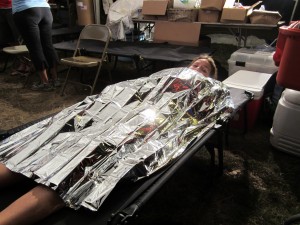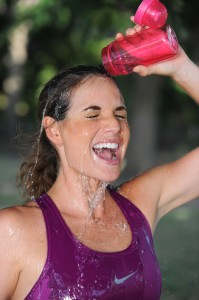 I don’t know about you, but after a sweaty summer run I crave fresh fruits and veggies. I often visualize a big bowl of blueberries or pineapple, or a giant slice of watermelon.
I don’t know about you, but after a sweaty summer run I crave fresh fruits and veggies. I often visualize a big bowl of blueberries or pineapple, or a giant slice of watermelon.
The lovely thing about summer running is that these cravings are happily met when I get home. This time of year, I stock my kitchen with all kinds of in season treats. Strawberries, blueberries, watermelon, big salads – the list goes on.
I often wash and prepare a big bowl of seasonal goodness before I run, so that when I get home I can dive right in. The bonus: fruits and veggies offer tons of nutrients that runners need, and are also a great way to rehydrate. Yes, I still have a tall glass of chocolate milk and lots of water, but consuming fruits and veggies aids rehydrating too.
A go-to snack this time of year: fresh mozzarella sliced with basil and red tomato slices. Add a little salt and pepper, and you have a fresh, nutrient-dense party on a plate!
Go out to the farmers market or store near you, and stock up on nature’s delights. I promise you that you won’t be sorry. Extra bonus? If you are trying to cut down those sweet temptations, some fruit is a great way to satisfy those cravings.







